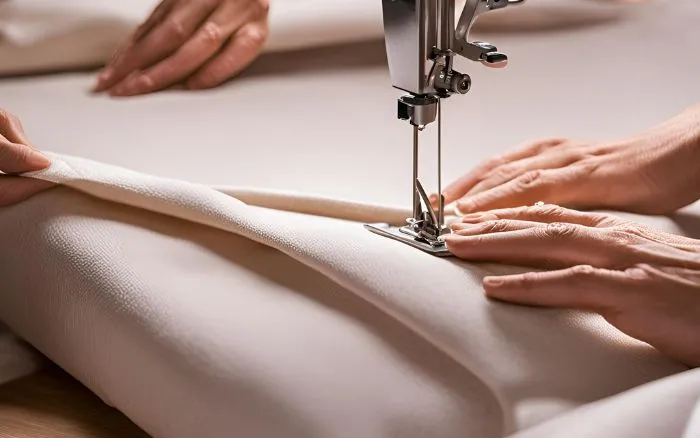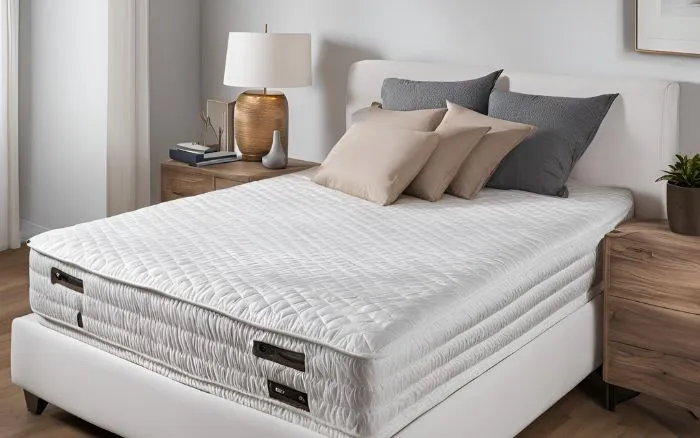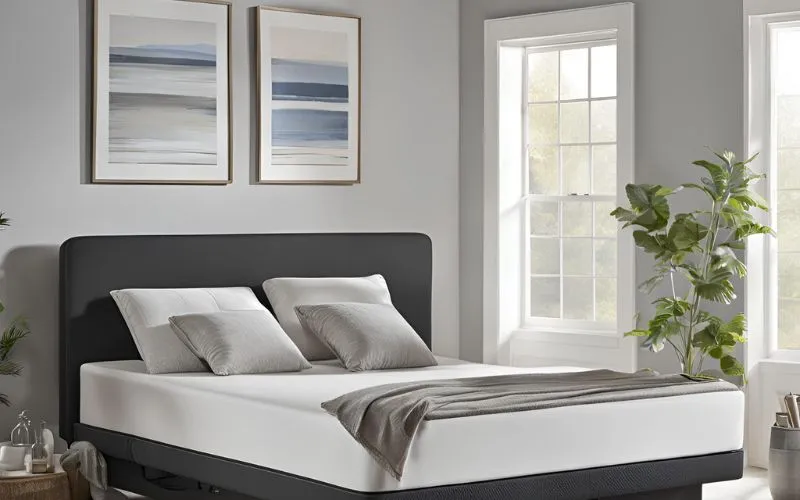Exploring Breathable Mattress Materials for Comfortable Sleep

Introduction
Welcome to our comprehensive guide to breathable mattress materials. In this article, we will explore the various aspects of breathable mattresses, including their materials, benefits, selection tips, and maintenance. Whether you’re shopping for a new mattress or simply want to enhance your understanding of breathable materials, this guide is designed to provide you with valuable insights and expert recommendations.
Understanding Breathable Mattress Materials
What are Breathable Mattress Materials?
Breathable mattress materials refer to the fabrics and components used in the construction of mattresses that allow air to flow through, promoting ventilation and thermal regulation. These materials are designed to reduce heat retention and moisture buildup, creating a more comfortable sleep environment.
- Natural Latex
- Bamboo Fibers
- Organic Cotton
- Cooling Gel Infusions
When it comes to breathable mattress materials, it’s essential to understand the specific qualities and benefits of each type. Natural latex, for instance, is known for its exceptional breathability and resistance to heat buildup. Bamboo fibers are also highly breathable and moisture-wicking, making them a popular choice for mattresses. Organic cotton provides excellent breathability, making it suitable for individuals with sensitivities or allergies.
Cooling gel infusions in mattress materials offer advanced thermal regulation, drawing heat away from the body and dispersing it to maintain a cool and comfortable sleep surface.
Choosing breathable mattress materials is vital for creating an optimal sleep environment. It enhances airflow, reduces perspiration, and supports the body’s natural temperature regulation processes. By selecting the right breathable materials, individuals can experience improved comfort, better sleep quality, and overall well-being.
Benefits of Choosing Breathable Mattress Materials
Choosing breathable mattress materials offers several advantages, including:
- Improved airflow, which helps in maintaining a fresh and airy sleep surface.
- Enhanced comfort, providing a supportive yet soft feel for a good night’s sleep.
- Better temperature regulation to ensure a cool and comfortable sleeping environment throughout the night.
- Reduction of allergen buildup, promoting a healthier sleep environment for allergy sufferers.
- Prevention of mold growth, which is essential for maintaining a clean and hygienic mattress.
When it comes to specific mattress materials, natural options such as organic cotton, wool, and latex are known for their breathability and additional benefits. These materials are hypoallergenic, moisture-wicking, and eco-friendly, making them ideal choices for those seeking a healthy and comfortable sleep surface.
Factors to Consider When Selecting Breathable Mattress Materials
When it comes to selecting breathable mattress materials, there are several important factors to consider. By carefully evaluating these factors, you can make an informed decision that will contribute to a comfortable and restful sleep experience.
- Consider the airflow properties of the materials. Look for materials that allow air to circulate freely through the mattress, preventing heat and moisture buildup.
- Choose materials that are known for their ability to regulate temperature, helping to create a cool and comfortable sleep environment.
- Examine the durability of the materials. High-quality, long-lasting materials can contribute to the overall lifespan and performance of the mattress.
- Look for materials that are resilient and can withstand regular use without compromising their structure and supportive properties.
- For individuals with allergies or sensitivities, consider materials that have hypoallergenic properties. These materials can help reduce the presence of allergens and create a healthier sleep environment.
- Choose materials that are resistant to mold, dust mites, and other common allergens, promoting better respiratory health during sleep.
Furthermore, it is essential to take into account the specific needs of individual sleepers. Factors such as temperature sensitivity and moisture control play a significant role in selecting the most suitable mattress materials. By addressing these considerations, you can ensure that the chosen materials contribute to an optimal sleep experience tailored to your unique needs.
Types of Breathable Mattress Materials
When it comes to choosing a breathable mattress, the type of materials used plays a crucial role in determining comfort, support, and airflow. Let’s explore the different types of breathable mattress materials in detail:
- Cotton: Cotton is a popular choice for breathable mattress materials due to its exceptional breathability, moisture-wicking properties, and soft feel. It is a natural and sustainable option for those seeking a cool and comfortable sleep surface.
- Wool: Wool is known for its natural breathability and temperature-regulating characteristics. It provides excellent insulation in both warm and cool conditions, making it a versatile option for breathable mattresses.
- Latex: Latex mattresses are engineered to offer enhanced breathability and responsiveness. They are known for promoting airflow and dissipating body heat, providing a comfortable and hygienic sleep environment.
- Memory Foam: Modern memory foam mattresses are designed with open-cell structures to enhance breathability. They contour to the body while allowing air to flow through, offering personalized comfort without compromising airflow.
- Gel-Infused Foam: Gel-infused foam mattresses combine the contouring benefits of memory foam with gel microbeads that actively dissipate heat, contributing to a cooler and more breathable sleep surface.
Each type of material has its unique properties, making it essential to consider individual preferences, climate, and overall sleep comfort when selecting a breathable mattress material.
Choosing the Right Breathable Mattress for Your Needs
Understanding Your Sleep Preferences
Understanding your sleep preferences is crucial when choosing a breathable mattress. Factors such as firmness, support, and temperature regulation play a significant role in determining the right mattress for your individual needs and comfort.
- Sleep Position: Whether you are a side sleeper, back sleeper, or stomach sleeper, understanding your preferred sleep position can influence the type of mattress that best supports your body.
- Body Weight: Your body weight affects how the mattress responds to pressure points and overall comfort. It’s important to consider this factor when selecting a mattress.
- Temperature Sensitivity: Some individuals are more sensitive to temperature changes during sleep. Having a mattress with proper temperature regulation can greatly impact sleep quality.
- Motion Isolation: If you share your bed with a partner or pet, having a mattress with good motion isolation can prevent disturbances during sleep.
- Health Conditions: Certain health conditions, such as back pain or allergies, may require specific mattress features to promote better sleep and alleviate discomfort.
Factors to Consider When Choosing a Breathable Mattress
When selecting a breathable mattress, there are several important factors to consider to ensure that you find the best option for your needs. These factors include:
- Material Composition:Look for materials that are known for their breathability such as latex, memory foam with open-cell structure, or natural fibers like cotton or wool. These materials allow for better air circulation and heat dissipation, promoting a cooler and more comfortable sleep environment.
- Breathability: Assess the breathability of the mattress, which is determined by the materials used and the mattress construction. A mattress with good breathability allows for optimal airflow and moisture regulation while you sleep, preventing heat buildup and providing a refreshing sleep experience.
- Motion Isolation: Consider the level of motion isolation provided by the mattress. This is particularly important if you sleep with a partner or pet, as good motion isolation minimizes disruptions caused by movement.
- Edge Support: Evaluate the edge support of the mattress, especially if you tend to sit or sleep near the edge. A mattress with solid edge support ensures that you can utilize the full surface area of the bed without feeling unstable or unsupported.
It’s essential to prioritize features that align with your desired sleep experience and overall health. By carefully considering these factors, you can select a breathable mattress that promotes restful sleep and enhances your well-being.
Tips for Testing Breathable Mattresses
When it comes to testing breathable mattresses, there are several key factors to consider. By evaluating these aspects, you can ensure that the mattress you choose will provide the comfort and support you need for a restful sleep. Here are some detailed tips for effectively testing breathable mattresses:
- Airflow: Start by assessing the airflow capabilities of the mattress. Look for mattresses designed with breathable materials and open-cell structures that promote air circulation. This helps prevent heat buildup and maintains a cool sleeping environment.
- Heat Retention: Consider how well the mattress regulates temperature. Look for features such as gel-infused foams, phase-change materials, or moisture-wicking fabrics, which can aid in dissipating body heat and maintaining a comfortable sleeping temperature.
- Pressure Relief: Test the mattress’s ability to provide pressure relief, especially in areas prone to pressure points, such as the shoulders, hips, and lower back. A breathable mattress with adaptive comfort layers can help distribute body weight evenly, reducing the risk of discomfort and stiffness.
- Edge Support: Evaluate the edge support of the mattress. A breathable mattress with reinforced edges can offer stability and prevent sagging, providing a consistent level of support across the entire sleep surface.
- Motion Isolation: Assess the mattress’s ability to minimize motion transfer. This is especially important for couples or individuals who share the bed. Look for breathable mattresses with motion-isolating features, such as individually wrapped coils or high-density memory foams, to reduce disturbance from movement.
By considering these aspects and conducting thorough tests, you can make an informed decision when selecting a breathable mattress that complements your individual sleep preferences and promotes a comfortable, restorative sleep experience.
Maintaining Breathable Mattresses for Longevity
Cleaning and Care Tips
Maintaining breathable mattresses involves regular cleaning and care practices to preserve their quality and performance. Vacuuming, spot cleaning, and proper ventilation can help extend the lifespan of breathable materials and ensure a hygienic sleep surface.
Protectors and Encasements
Using protective encasements and mattress protectors can safeguard breathable mattresses from spills, stains, and allergens. These accessories create an additional layer of protection without compromising the breathability of the mattress.
- Prevent liquid spills from reaching the mattress
- Protect against stains and allergens
- Extend the longevity of the mattress
- Enhance the overall cleanliness and hygiene of the mattress
There are different types of mattress protectors and encasements available to suit specific needs:
TypesFeaturesWaterproof ProtectorsProvide protection against liquid spills and stainsAllergen-Proof EncasementsGuard against allergens, dust mites, and pet danderBreathable Fabric CoversOffer protection while maintaining the breathability of the mattressZippered EncasementsEncase the entire mattress for 360-degree protection By selecting the appropriate protector or encasement, individuals can ensure that their mattresses remain clean, hygienic, and free from the effects of spills and allergens, while still preserving breathability.
Dealing with Moisture and Odor
Moisture and odor can be common issues that affect the quality of your sleep environment. Here are some effective strategies to address these concerns:
- Moisture-Wicking Mattress Pads: Invest in high-quality moisture-wicking mattress pads designed to absorb excess moisture and promote better airflow. These pads are specially engineered to keep your mattress dry and comfortable.
- Natural Remedies: Consider using natural remedies such as baking soda to absorb moisture and neutralize odors. Baking soda is known for its absorbing properties and can help maintain a fresh and clean sleep environment.
- Proper Ventilation: Enhance the ventilation in your bedroom to reduce moisture buildup. Opening windows during the day, using fans, and ensuring proper airflow can significantly contribute to a fresh and breathable sleep space.
By incorporating these strategies into your mattress care routine, you can effectively manage moisture and odor, creating a more comfortable and refreshing sleep environment.
Conclusion
In conclusion, understanding breathable mattress materials is essential for making informed decisions when selecting and maintaining mattresses. By considering the benefits, types, and maintenance aspects of breathable materials, you can create a comfortable and hygienic sleep environment that caters to your specific sleep preferences. We hope this guide has provided valuable insights to help you make the best choices for your sleep wellness.




